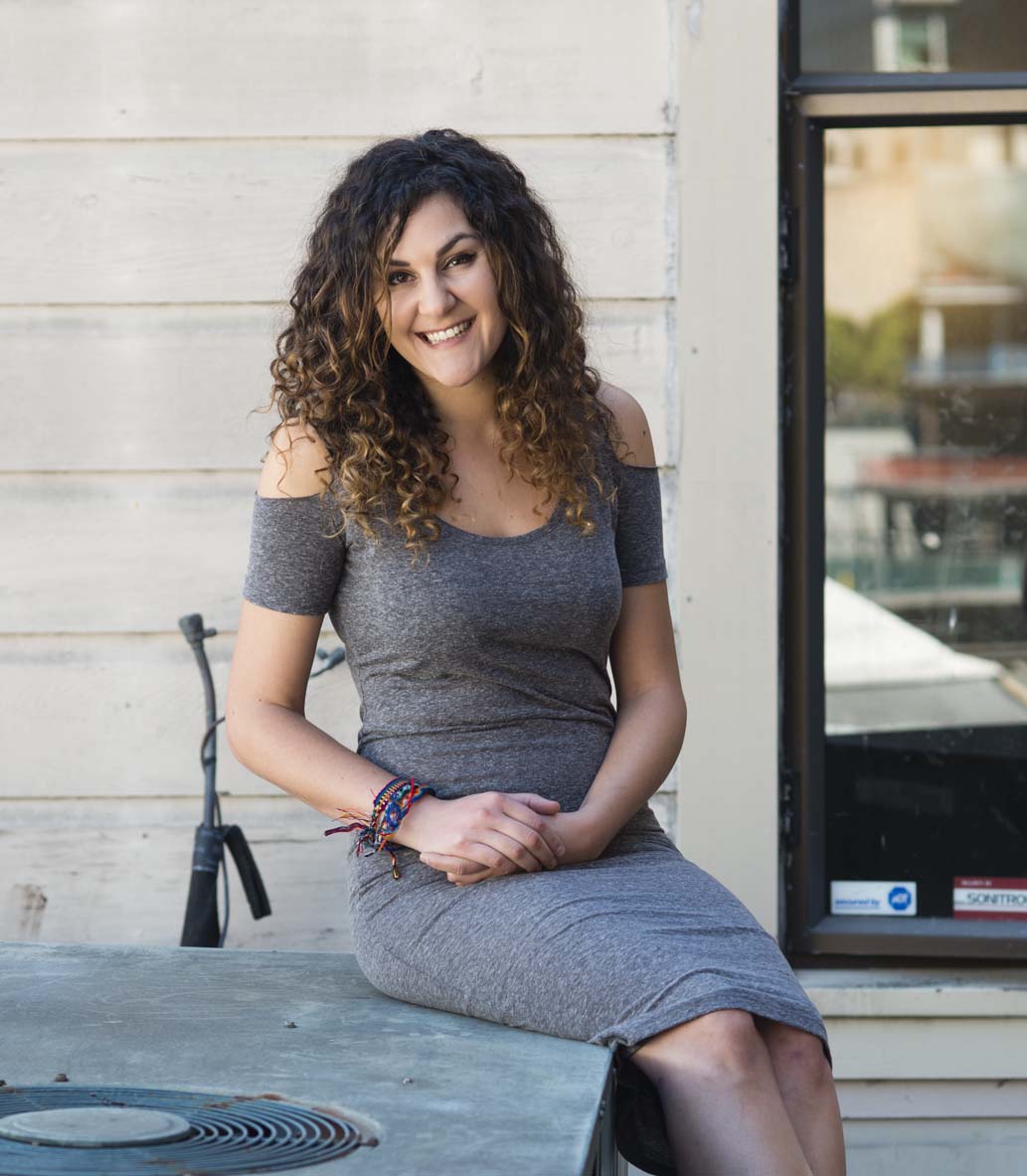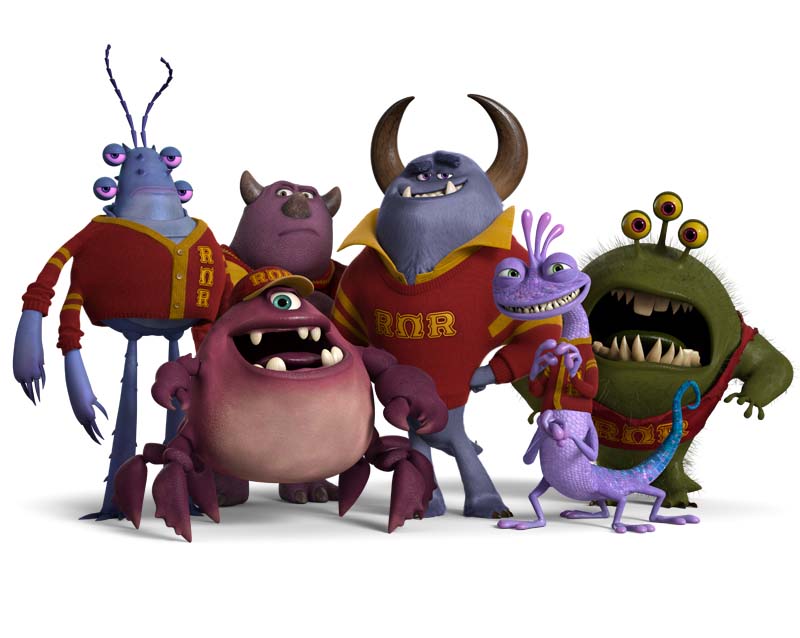
Animating a character "all starts with the eyes,” says Brett Pulliam, who is now working on “Inside Out,” a Pixar film produced by Jonas Rivera (B.A., ’95).
As many as 120 animators work on a single Pixar feature film, so it’s no surprise that Brett Pulliam (B.A., ’96) and Michelle Ohana (B.A.,’02), two of the animators on Pixar’s “Monsters University,” rarely met while creating the hit movie, just released on Blu-Ray and dvd. Yet both found dream careers in animation after studying at SF State, and both credit the University for much of their preparation and good fortune.
“I got lucky,” Pulliam says sitting down for coffee under the vaulted skylights of Pixar’s Emeryville headquarters, as directors and gawking visitors stroll by. “I learned so much from my fellow State students. Some went to Industrial Light and Magic and worked on ‘Jurassic Park.’ Another friend is now up in Portland as a director at LAIKA [which made ‘Coraline’]. Another friend started a TV series in England, and another friend is the head of a studio called Ghostbot. We all still keep in touch.”
Pulliam studied animation under Professor Patricia Amlin in the mid-nineties. A big fan of Tim Burton’s “The Nightmare Before Christmas,” he was eager to learn the film’s stop-motion animation technique. Then Pixar released the computer-animated “Toy Story,” and Pulliam was captivated.
Fortunately, the Cinema Department’s emphasis in animation covers all techniques — traditional drawn animation, stop-motion and computer animation. “Patricia was so great,”Pulliam recalls. “The program had a Cal Arts feel,” he adds, referring to the prestigious Southern California art school. “We were there all day long animating. That’s what it takes.”
Professor Amlin (M.A., ’73), who herself studied in SF State’s Cinema Department, remembered Pulliam’s commitment. “He was always a leader in the class,” she says from Colorado, where she has retired to work on her art. “It takes inner strength to give generously to other people’s films while staying focused on your own. Brett was interested in developing the art form, and that’s a blessing for a teacher.”

“When you think about how many people around the world will enjoy the film,” says animator Michelle Ohana, “it makes all the hard work totally worth it.”
No surprise that when Pixar came scouting, Pulliam was hired before he even finished his student film, which featured a rat searching through trash for food, and a golden retriever who sees a lady with a hot dog and swaps the eats for a stick of dynamite.
“I was finishing that film and working at a bank from midnight to four in the morning, pulling rubber bands off piles of checks,” Pulliam remembers. “I was still working that bank job and starting ‘A Bug’s Life’ at Pixar, and sleeping on a couch.”
Life may be cushier now — after 10 films with Pixar, Pulliam owns a home with his wife in El Cerrito — but the passion that drew him to animation hasn’t softened. Animation is mostly a solo job: After the film’s plot is drawn in storyboard, the scenes are divided up and assigned to individual animators, who block in about two minutes of action per scene and then report back to the director for notes. The work is really like physical improv — the animator acts out the scene, decides on the major gestures the characters will make, then blocks those in using a computer tool provided by the rigging department. The transitions between movements are filled in last.
“The directors tend to assign me all the action shots, all the running and tackling,” Pulliam says. For “Monsters University,” one of Pulliam’s scenes involved five characters “hanging in a chain, and one character had to climb up as though they were a rope.” Pulliam drew on his hobby of rock climbing to get the action. But at Pixar, he says, “The movies are more driven by acting, and you’re going to get more notes on your acting than your physics. We have to make the acting better than real life to make it read on film.”
Michelle Ohana agrees. She animated several background scenes for “Monsters University,” adding small comic touches
like a fellow student falling asleep in class behind the main character, the green-eyeball monster Mike. “In one shot, Mike is looking out at the campus,” Ohana recalls, “and the director said, ‘make it dreary,’ so I had a flier come off a post outside, and fly in this guy’s face and he just keeps walking.” She also delighted in making the mouths of background characters say naughty words, as an inside joke. (“You can’t tell,” she says.)
Associate Professor Martha Gorzycki, who runs SF State’s animation program, says classes encourage creative storytelling and artistic expression. “Many studios want to hire artists and creative thinkers, not just software users,” she says.
Humor made Ohana stand out to Pixar recruiters when she was first hired to work on “Cars 2” and “Brave.” Her route to animation was less direct than Pulliam’s — she majored in fine art and did not choose a film career until five years later, training with an online program called Animation Mentor. But she credits her painting professor, Cherie Raciti, for giving her confidence. “I felt like she really understood me, like she cared,” Ohana says.

Pixar Creative Services
Ohana spoke during her lunch break from her new job at Toy Talk, a San Francisco animation company founded by Pixar vets, where Ohana now works on a voice recognition iPad app for children called “The Winston Show,” animating the app’s smiling yellow host, Winston, and his sidekick, an orange blob named Ellington. She jumped to Toy Talk in May after working on “The Blue Umbrella,” the short film that served as an opener for “Monsters University.”
Working on any animation project, Ohana and Pulliam agree, involves both keen observation and fierce originality.
“I’m continually building a library of gestures I see people do,” Ohana says. “Then I act out all my shots and study what I do on camera. But what makes anyone’s work stand out is that you’re putting something uniquely you in it and not worrying about what people want to see. It’s about having an authentic performance.”